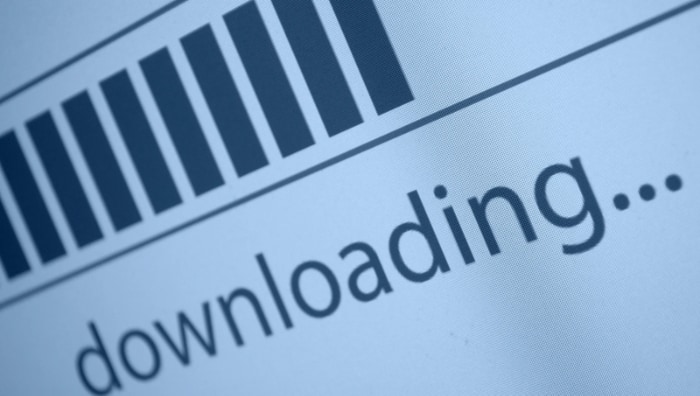What Are Digital Downloads? The Complete Overview

Digital downloads have revolutionized the way we consume content, from music and movies to software and ebooks. Gone are the days when obtaining new media or software required a trip to the store, a cumbersome process often limited by physical availability and location.
Today, you can access a wide array of digital products with just a few clicks, from the comfort of your own home. This transformation is not just a matter of convenience; it has broader implications for accessibility, economic models, and even the environment.
Definition and Types of Digital Downloads
Digital downloads refer to the electronic distribution and retrieval of various types of files or content over the internet. They allow users to acquire digital goods without requiring a physical medium, providing an instant and convenient method of access.
What Are Digital Downloads?
Digital downloads are files or sets of files transferred from a server to a user's local storage through the internet. The download can occur through a direct link, via an app, or even through a specialized platform designed for distributing specific types of digital goods.
Whether it's an application to edit photos, an eBook to enrich your knowledge, or a video game to entertain you, the central idea is the same: the content is delivered electronically, usually in a compressed format, and is made available for use after the download is complete.
Types of Digital Downloads
Software Applications
These are perhaps the most common types of digital downloads. Software applications can range from productivity tools like Microsoft Office to specialized programs for tasks like graphic design or video editing.
eBooks
Digital books, commonly referred to as eBooks, are electronic versions of traditional printed books. They can be read on a variety of devices such as eReaders, tablets, or even smartphones.
Music
Digital music files have almost entirely replaced CDs and other physical formats. Formats like MP3 and FLAC are popular for storing audio content and can be easily downloaded from various platforms.
Video Content
Movies, TV shows, and other video content are available for download from many platforms. While streaming services have grown in popularity, downloading remains a viable option for offline viewing.
Games
Video games are increasingly available through digital downloads, often through specialized platforms like Steam for PCs or the respective stores for console games.
Other Digital Goods
This category includes a broad variety of other content like digital artwork, online courses, podcasts, and even virtual currencies.
Historical Evolution of Digital Downloads
The concept of digital downloads has come a long way since its inception. Early forms were limited and cumbersome, but as technology has advanced, the process has become seamless and increasingly integral to modern life.
The Early Days: Bulletin Board Systems and FTP
In the late 1970s and early 1980s, Bulletin Board Systems (BBS) were among the first platforms that allowed users to download files. Typically, these were text-based systems where users dialed in via a modem.
File Transfer Protocol (FTP) sites soon followed, offering a more efficient method to download files from a central server.
Influence of the Internet
The commercialization of the internet in the 1990s drastically changed how digital downloads operated. High-speed connections made it easier to download larger files, and user-friendly graphical interfaces became the norm.
During this period, the first digital music services began to appear, disrupting the traditional music industry.
The Arrival of Specialized Platforms
In the early 2000s, specialized platforms for distributing digital content started to take shape. iTunes was launched in 2001, becoming a model for legal music downloads and later for other forms of digital media.
Other platforms like Steam for games and Amazon's Kindle store for eBooks soon followed, providing organized ecosystems for specific types of digital downloads.
The Mobile Revolution
The rise of smartphones and mobile apps added another layer to the digital downloads story. App stores for iOS and Android allowed users to download applications directly to their phones, making software even more accessible.
This era also saw the proliferation of mobile games, which are among the most downloaded items today.
The Streaming Shift
Although not strictly a form of digital download, the ascendancy of streaming services has impacted how we consume digital content. Platforms like Spotify and Netflix offer an alternative to downloading, letting users access extensive libraries of music and video without having to store files locally.
Advances in Security and Distribution
Digital Rights Management (DRM) became more sophisticated to protect against piracy. Additionally, technologies such as BitTorrent allowed for the distribution of much larger files, benefiting industries like software and gaming where file sizes can be quite large.
The Technology Behind Digital Downloads

Digital downloads may seem straightforward to the end-user, but they involve a range of technologies working in concert. From file formats and data transfer protocols to security measures, each component plays a crucial role in ensuring a smooth and secure download experience.
File Formats
Various types of content require different file formats to function optimally. For example, MP3 and FLAC are popular formats for audio files, while PDF and EPUB are commonly used for eBooks.
Video files often come in MP4 or MKV formats. Understanding these formats is essential for both content creators and consumers, as it affects quality, compatibility, and even storage space.
Data Transfer Protocols
When it comes to transferring the files, certain protocols dictate how data moves from one point to another over the internet. The most widespread is HTTP (HyperText Transfer Protocol), which is the backbone of any data transfer on the web.
FTP (File Transfer Protocol) is another option, more commonly used for larger files or batch transfers.
Encryption and Security
Ensuring the secure transfer and storage of digital files is of paramount importance. Encryption techniques scramble the data in a way that makes it unreadable without the correct decryption key.
This is especially crucial for payment transactions and for the transfer of sensitive information.
Digital Rights Management
Also known as DRM, this technology aims to prevent unauthorized redistribution of digital content. It imposes certain limitations on how a file can be used, such as restricting the number of devices where it can be installed or played.
While DRM has its critics, it is a common tool used to protect intellectual property rights.
Hosting and Distribution Platforms
Specialized platforms like Steam for games, iTunes for music, and Kindle for eBooks offer a centralized location to find and download digital content. These platforms often provide additional features like user reviews, recommendations, and social networking components, adding value to the basic downloading service they offer.
High-Speed Networks
The increase in network speeds has been a significant enabler for digital downloads. Faster internet connections allow for quicker downloads, making it feasible to download larger files or stream content in real-time.
This has contributed to the widespread adoption of digital downloads and has opened up opportunities for more complex and resource-heavy types of content to be distributed this way.
Advantages of Digital Downloads
Digital downloads offer an array of benefits that make them an attractive option for both consumers and content providers. From the sheer convenience and speed of accessing digital goods to the flexibility they offer, there are several compelling reasons for their widespread adoption.
Convenience
Perhaps the most significant advantage is convenience. Gone are the days of having to travel to a store to purchase physical media.
With digital downloads, consumers can acquire the content they desire from the comfort of their homes. This convenience extends to 24/7 availability, as digital storefronts are always open and never run out of stock.
Speed of Access
Another crucial benefit is the rapid access to content. A user can complete a purchase and start enjoying the digital product in a matter of minutes, if not seconds, depending on their internet speed and the file size.
This immediacy is particularly appealing in today's fast-paced world, where consumers have come to expect instant gratification.
Flexibility Across Devices
Digital downloads can often be used across multiple devices, giving users more flexibility in how they access and use their purchased content. For instance, an eBook purchased on one device can generally be read on other devices using the same account, and music files can be transferred to various playback devices.
Lower Costs
In many cases, digital downloads are less expensive than their physical counterparts. This is partly because there are no manufacturing, shipping, or storage costs involved.
Lower prices make digital products more accessible to a broader audience, thereby increasing the potential market for content providers.
Environmental Benefits
Digital downloads also have a lower environmental impact compared to physical products. The absence of physical manufacturing and shipping reduces the carbon footprint and eliminates the need for materials like plastic and paper, making it a more sustainable option.
Enhanced Features and Updates
Digital downloads often come with the added benefit of easy updates. For software and applications, updates can be pushed directly to the user, ensuring they always have the latest version.
Even for digital media like eBooks, updates or corrections can be made easily, and users can download the updated version at no extra cost.
Disadvantages and Concerns

While digital downloads offer a plethora of benefits, they are not without their downsides and potential pitfalls. As with any technology, understanding the limitations and concerns is essential for making informed decisions.
Digital Rights Management Restrictions
Digital Rights Management (DRM) can sometimes limit how a user interacts with their purchased content. For example, some DRM systems may restrict the number of devices on which a file can be played or viewed.
Such limitations can cause frustration for consumers who value flexibility in how they use their digital goods.
Dependence on Internet Connectivity
A stable internet connection is a prerequisite for downloading digital content. For those in areas with limited or unreliable internet access, this can be a significant disadvantage.
Even after downloading, some content may require periodic online verification, creating challenges for offline use.
Storage Limitations
Digital files, especially high-quality media like videos and complex software, can take up considerable storage space on your device. Users need to manage their local storage efficiently or rely on cloud storage solutions, which may have additional costs and potential privacy concerns.
Loss of Ownership Feel
Unlike physical products, digital downloads do not offer a sense of ownership in the traditional sense. You can't lend, resell, or gift most digital content due to license restrictions.
This lack of tangible ownership is a drawback for those who prefer the physicality of books, DVDs, or CDs.
Security Risks
Downloading digital content opens up the possibility of encountering malware or other security threats, especially from less reputable sources. Ensuring that downloads are from trusted providers is crucial but does not entirely eliminate the risk.
Lack of Broadband Accessibility
Though more of a societal issue, it's worth noting that not everyone has access to high-speed broadband internet. This digital divide creates a barrier for people who cannot download large files quickly, effectively limiting their access to digital content.
Potential for Obsolescence
As technology advances, file formats and software requirements change. There is a risk that the digital content you download today may become obsolete or incompatible with future systems.
While software updates can sometimes address these issues, there is no guarantee of perpetual compatibility.
Market Dynamics
The rise of digital downloads has had a profound impact on market dynamics across various industries, from entertainment to software development. The shift from physical to digital has not only affected consumer behavior but has also led to significant changes in business models, distribution channels, and even regulatory frameworks.
Consumer Preferences
The appeal of instant access and convenience has dramatically shifted consumer preferences towards digital downloads. This trend is particularly noticeable among younger demographics, who are more accustomed to digital consumption.
Consumer preferences drive demand, and businesses have had to adapt by offering more digital products to meet this demand.
Business Models
The move to digital has allowed for the development of new and innovative business models. Subscription-based services, pay-as-you-go, and freemium models are a few examples.
These options provide flexibility to consumers and create recurring revenue streams for businesses, significantly affecting the market dynamics.
Distribution Channels
The digital shift has democratized distribution, allowing even small content creators to reach global audiences without the need for large-scale physical distribution networks. Platforms like Steam, Kindle, and various app stores have become vital channels that connect content providers directly with consumers.
Competitive Landscape
Digital downloads have lowered the barriers to entry for new players, intensifying competition. Established firms now find themselves contending with smaller startups that can quickly launch digital products.
Consequently, the competitive landscape is in a constant state of flux, requiring businesses to be agile and adaptive.
Regulatory Challenges
The proliferation of digital downloads has raised new regulatory challenges related to copyrights, taxation, and consumer rights. Legal frameworks are still evolving to catch up with the rapid technological changes, adding a layer of complexity to the market dynamics.
Global Reach
One of the most striking aspects of the digital download market is its global reach. Unlike physical products, which may require localized versions and separate distribution networks for different regions, digital products can be instantly available to a worldwide audience.
However, this global reach also necessitates a more nuanced understanding of regional preferences, legal constraints, and currency differences.
Price Sensitivity and Dynamic Pricing
Digital downloads allow for dynamic pricing strategies, including real-time adjustments based on demand, seasonal changes, or consumer behavior. However, this flexibility can also make consumers more price-sensitive, as they can easily compare prices across multiple platforms.
Legal Aspects

Digital downloads occupy a complex space in legal terms, involving multiple facets such as intellectual property, consumer rights, and international law. The rapid growth of this market has often outpaced existing legislation, leading to ambiguities and challenges that both content providers and consumers must consider.
Intellectual Property Rights
One of the core legal concerns revolves around intellectual property rights, especially copyrights. Content providers must ensure they have the legal right to distribute digital goods.
Unauthorized distribution can lead to legal repercussions, including fines and, in extreme cases, criminal charges. On the consumer side, users need to be aware of the limitations imposed on their use of the downloaded content.
Licensing Agreements
When a consumer purchases a digital download, they are often not buying the content but a license to use it. These licensing agreements define the scope of how the digital good can be used.
For instance, some licenses prohibit the redistribution or commercial use of the content. Both providers and consumers need to pay close attention to the terms specified in these agreements.
Consumer Rights and Refunds
Legislation around consumer rights and digital downloads varies significantly by jurisdiction. Some regions, like the European Union, offer strong protections that even allow for refunds under specific circumstances. However, these laws are not universally applicable, and consumers should be aware of their rights based on their jurisdiction.
Cross-Border Legal Issues
As digital downloads can be accessed globally, cross-border legal issues often arise. Content providers must consider international laws and regulations when distributing their products.
This complexity multiplies when you factor in issues like regional content restrictions, varying taxation laws, and differing consumer rights policies.
Privacy and Data Security
Digital distribution platforms often require users to create accounts, which involves the collection and storage of personal data. Privacy laws, such as the General Data Protection Regulation (GDPR) in Europe, impose stringent rules on data collection, storage, and usage.
Non-compliance can result in hefty fines and legal complications.
Accessibility Laws
A less commonly considered but increasingly important legal aspect involves accessibility. Several jurisdictions require digital content to be accessible to people with disabilities.
Failing to meet these requirements can expose content providers to legal risks, including lawsuits and financial penalties.
Content Ratings and Age Restrictions
Content providers also need to be mindful of age-restricted content and adhere to content rating systems. Providing explicit or mature content to underage consumers could result in legal action.
Conclusion
Digital downloads have transformed how we consume content, from music and movies to software and e-books. While they offer unparalleled convenience and have reshaped market dynamics, there are also disadvantages and concerns to consider.
Technological underpinnings make it possible, but they come with their own challenges. Regulatory frameworks and legal aspects further add complexity to this evolving model of content distribution.
Both consumers and content providers must grapple with these multi-faceted issues as they engage in the ever-expanding world of digital downloads. By examining each facet critically, we can better appreciate the full scope and impact of digital downloads on modern life.


